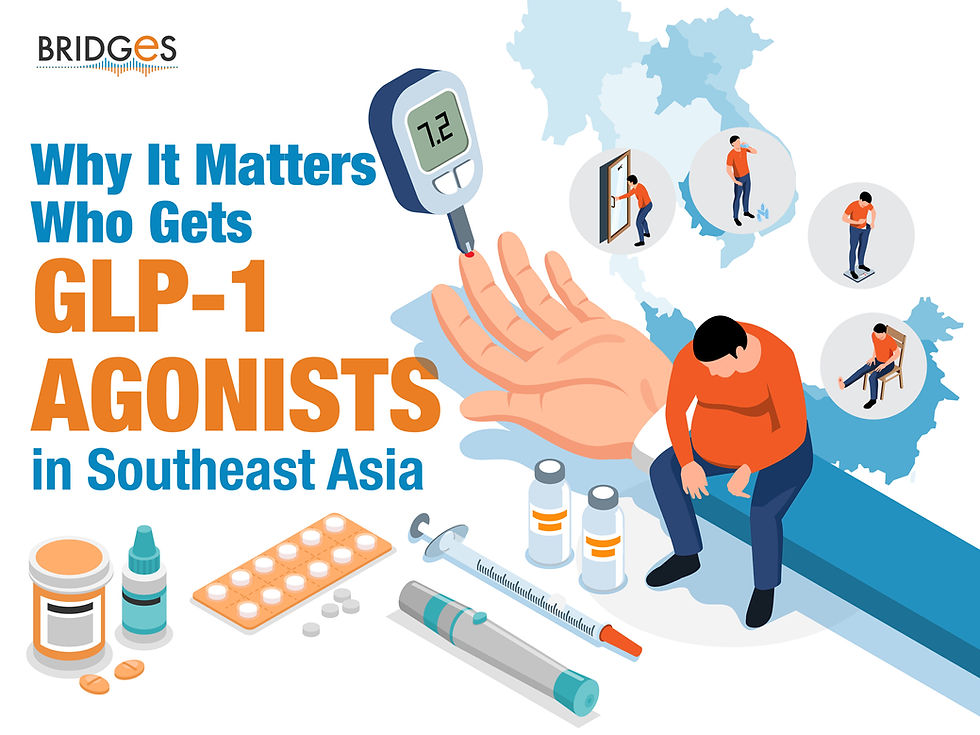Selecting Influencers for Medical Aesthetics Brands
- Bridges M&C team
- Apr 15, 2021
- 3 min read
Updated: Dec 11, 2024
Marketers must consider the quality of influencers’ content, who their audiences are, and not just number of followers.

With traditional media on the decline, and the options to fast-forward or use ad blockers online, more people are tuning out advertisements. For these reasons, marketers look to influencer marketing (IM) as an alternative communications strategy that leverages on influencers’ followings to boost brand awareness, enhance leads and drive sales.
Since its rise in 2010, IM has gone from strength to strength, with companies expected to spend USD13.8 billion on engagements this year, and the potential to see a return of up to USD20 for every dollar spent on IM.
Despite IM’s potential, campaigns can fall flat if brands work with unsuitable influencers. As a communications agency, Bridges M&C has worked with some of the world’s leading pharmaceutical companies, medical aesthetics brands, and practitioners such as dermatologists and plastic surgeons, advising them on IM solutions for their latest products and treatments.
In this article, we hear from Mr. Patrick Poh, Senior Digital Consumer Marketing Manager from Allergan Aesthetics for Singapore, Malaysia, and the Philippines; and Dr Hew Yin Keat, Aesthetic Physician and Medical Director of the M.A.C Clinic in Kuala Lumpur, on what to consider when pre-qualifying influencers to best meet marketing objectives.
What makes for an effective influencer?
· Relevance and values: According to Poh, influencers must first be aligned with the brand:

“As a medical aesthetics company marketing injectables, we tend to aim for beauty and medical aesthetics influencers. However, we may also reach out to mothers or fashion tastemakers, as long as their followers resonate with our brand or products,” he says. Once this basic criterion is met, it is advised to filter profiles for divisive, controversial, or lewd content. “I also recommend ascertaining if the influencer has been engaged with competing brands. Marketers may want to avoid a conflict of interest, especially if the other engagement involves similar products,” adds Poh.
· Reach and follower demographic: Although marketers may be tempted to work with mega/macro influencers, high follower counts do not necessarily mean greater leads. The higher the number of followers, the less niche his or her content is likely to be, and the less likely that the followers will be from your target audience. “Brands should ensure an influencer’s follower demographics match that of your target customer, particularly in terms of age, gender, and income bracket,” says Poh.
· Engagement quality: Generally, followers are more likely to engage with organic posts than paid ones. Certain brands tend to spoon-feed influencers with photos, videos, and template text, which make the posts seem ‘bought’ or paid for, rather than organic. To encourage meaningful engagement while communicating key product information, brands can suggest ideas on how posts can be presented, while allowing some freedom for creativity. “Giving influencers room to personalize their posts makes sponsored content seem less like ads and more like honest reviews,” explains Poh.
· Talent and reputation: As a business owner, Dr Hew enjoys working with diverse influencers, as long as they are respected within their communities.

“At the M.A.C Clinic, we collaborate with a variety of influencers — from singers and astronauts to athletes and chefs — as long as they are reputable. This enhances my clinic’s reputation as an authentic business, while increasing my brand’s awareness among the various niche groups our influencers reach out to,” says Dr Hew.
· Respect and credibility: Marketers commonly engage influencers by paying them for positive reviews. While this may work for certain brands, Dr Hew prefers working with influencers who have actually undergone treatments as a paying customer and experienced genuine results. “This way, posts about my services are based on fact, which enables me to maintain my clinic’s reputation, while the influencers we engage continue to maintain their credibility,” says Dr Hew.
This is part 1 of a two-part article.




Comments